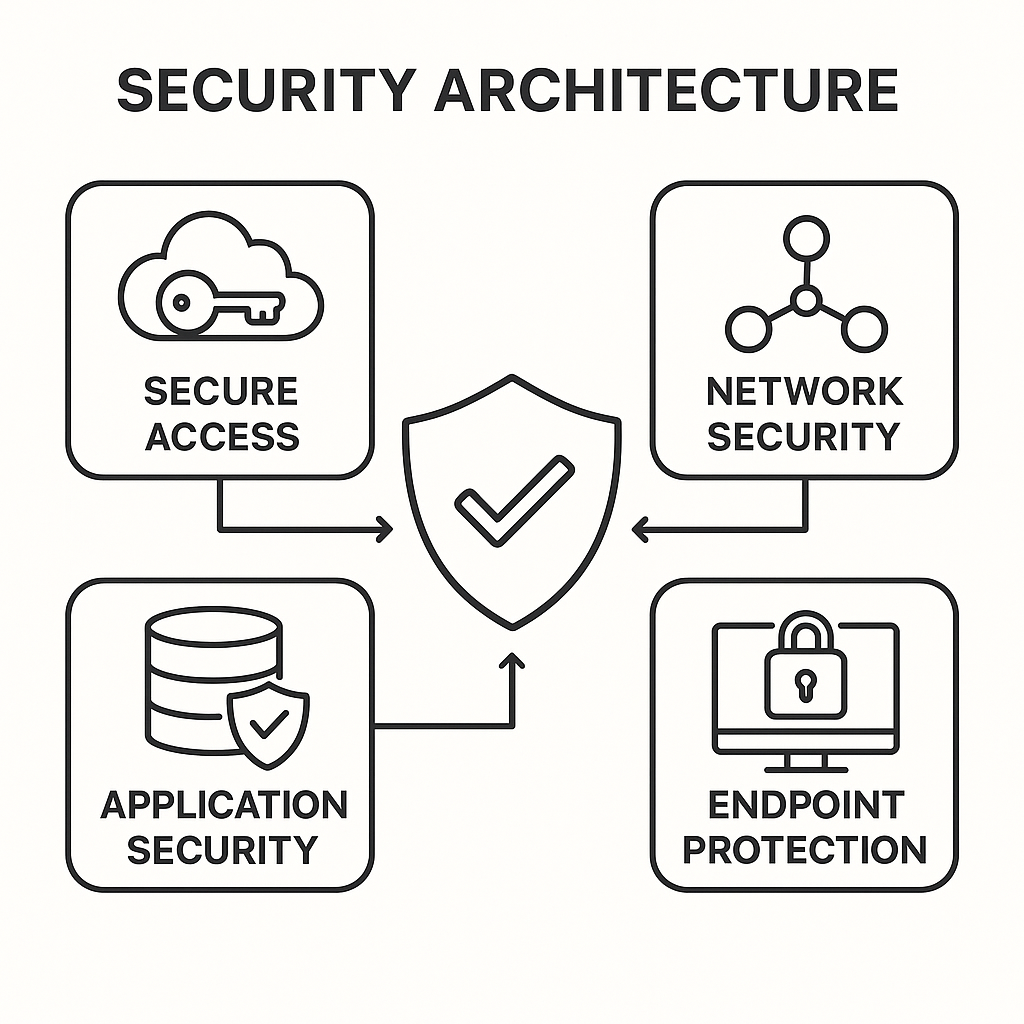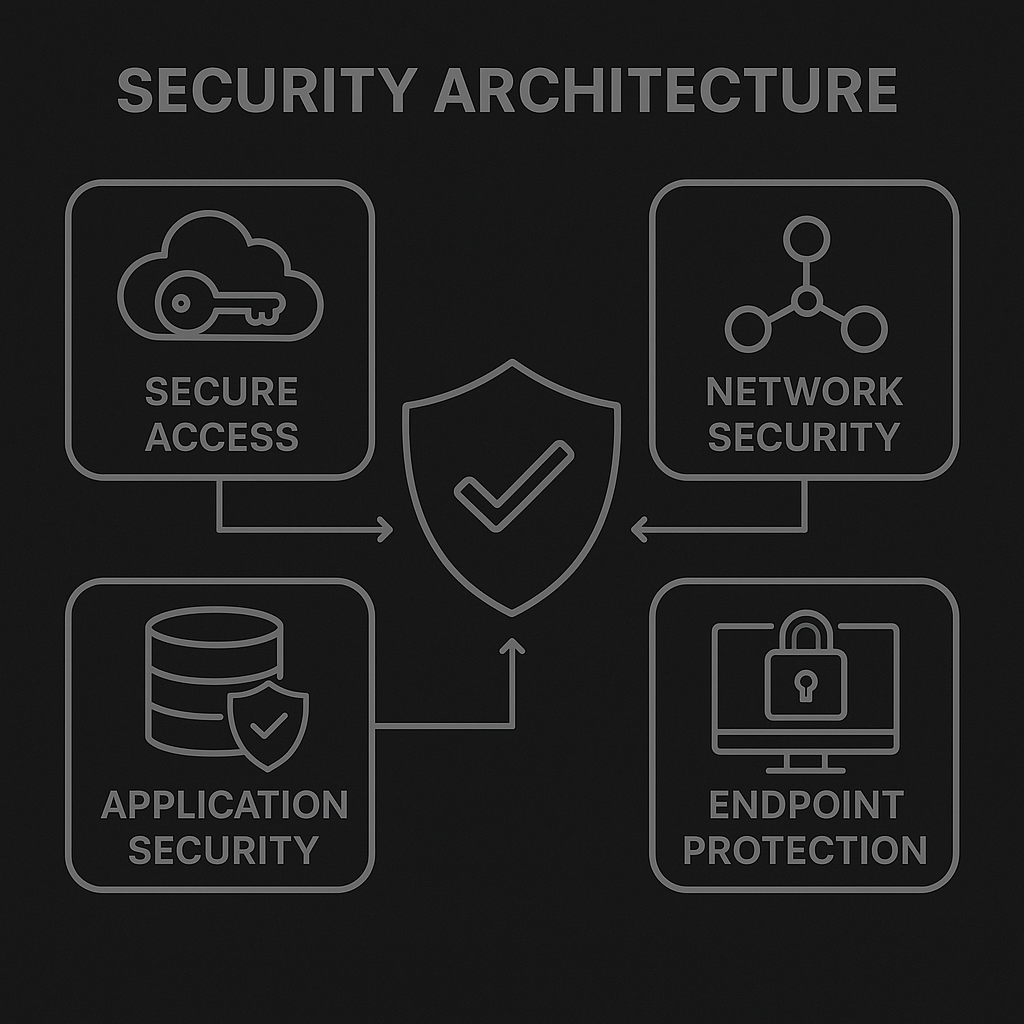Security Architecture: Principles for Designing Secure Systems and Networks
An overview of core security architecture principles, including defense in depth, zero trust, IAM, network segmentation, and compliance for designing secure systems.
Security Architecture: Principles for Designing Secure Systems and Networks
So, your boss just said, “Make it secure.” And you thought: “Define… secure?”
Welcome to the world of Security Architecture, where paranoia isn’t a flaw—it’s a feature. Whether you’re managing a sprawling hybrid cloud or trying to keep that one legacy server from emailing your secrets to North Korea, this post is for you. Let’s walk through how real-world security is designed, built, and hopefully not breached by Tuesday.
TL;DR
- Apply defense in depth—security at every layer.
- Use Zero Trust: never assume trust, always verify.
- Implement least privilege and strong IAM controls.
- Segment networks, monitor continuously, and automate response.
- Compliance isn’t optional—design with it in mind.
What Is Security Architecture, Really?
Security architecture is like the blueprint for a fortress—except the fortress is digital, the bricks are firewalls and policies, and the invaders wear hoodies and run Python scripts.
It’s the structured approach we use to define where to put our defenses, how strong to make them, and what to do when—inevitably—something slips through.
Think of it as a mix of:
- Policies (aka “we said so”)
- Controls (aka “we enforced it”)
- Technology (aka “we hope it works”)
Core Principles (A.K.A. Your Security Commandments)
1. Defense in Depth
If one lock is good, seven are better.
2. Least Privilege
If Dave from HR can reboot prod, start sweating.
3. Separation of Duties
Nobody gets full power without checks and logs.
4. Secure by Design
Don’t bolt security on—bake it in.
5. Keep It Simple (KISS)
Simple systems are easier to secure.
Firewalls: Still the Bouncers of the Network
Types of Firewalls
- Packet-Filtering
- Stateful Inspection
- Proxy Firewalls
- Next-Gen Firewalls (NGFWs)
Treat firewall rules like expired milk—review often.
Secure Networking: It’s Not Just Plug and Pray
Segmentation
Keep prod, dev, QA far apart.
Access Control
Enforce VLANs, ACLs, NAC.
Monitoring
IDS/IPS only work if alerts aren’t ignored.
Compliance: The “Do It or Get Fined” Club
GDPR
- “Right to be forgotten” isn’t just a breakup line.
- 72-hour breach notification? Don’t miss it.
HIPAA
- Treat ePHI like state secrets.
- Encrypt, audit, and restrict access.
ISO 27001
- Run an ISMS.
- Document everything. Cry later.
Identity & Access Management (IAM)
IAM Pillars
- Authentication
- Authorization
- Audit
Cloud IAM Best Practices
- Use roles, not users.
- Rotate keys and credentials.
- Secure service accounts.
- Use federation (SAML, OIDC) when possible.
MFA isn’t optional—it’s oxygen.
Threat Modeling & Risk Assessment
- Threat Modeling: Map paths attackers might take.
- Risk Assessment: Prioritize what’s worst, not just what’s easiest.
Mini use case: A misconfigured test system exposed S3 credentials to GitHub. Why? No access review, no audit trail.
Zero Trust: Trust No One, Verify Everyone
Tenets of Zero Trust
- Verify Explicitly
- Least Privilege Always
- Assume Breach
Monitoring & Incident Response
Tools to Watch
- SIEMs
- EDR
- SOAR
Incident Response Playbook
- Detect
- Contain
- Eradicate
- Recover
- Report (regulators, legal, execs)
- Debrief (w/ logs, lessons, coffee)
GDPR breach? You’ve got 72 hours. Start running.
Cloud Security
Shared Responsibility
- You secure your configs, creds, and data.
Best Practices
- Encrypt everything.
- Harden CI/CD pipelines.
- Scan Infrastructure-as-Code (IaC) for misconfig.
Cloud tools to explore: AWS GuardDuty, Azure Defender, GCP SCC.
Your Security Toolbox
| Tool | Use |
|---|---|
| Firewall | Traffic filtering |
| IDS/IPS | Threat detection |
| SIEM | Log aggregation & correlation |
| IAM | Access control & authN/authZ |
| MFA | Strengthened authentication |
| Encryption | Protect data at rest & transit |
Conclusion
Security architecture isn’t a one-and-done checklist. It’s a living strategy—designed to evolve with the threats, the business, and the tech stack.
Design for breach. Detect quickly. Respond faster. Audit everything.
Secure systems aren’t built with hope—they’re architected with intent.
References
- NIST Zero Trust Architecture
- Microsoft Zero Trust Guidance
- OWASP Authentication Cheat Sheet
- HIPAA to ISO 27001 Mapping
- ISO/IEC 27001 Standard
- EDPB GDPR Guidance
- HIPAA Security Rule

